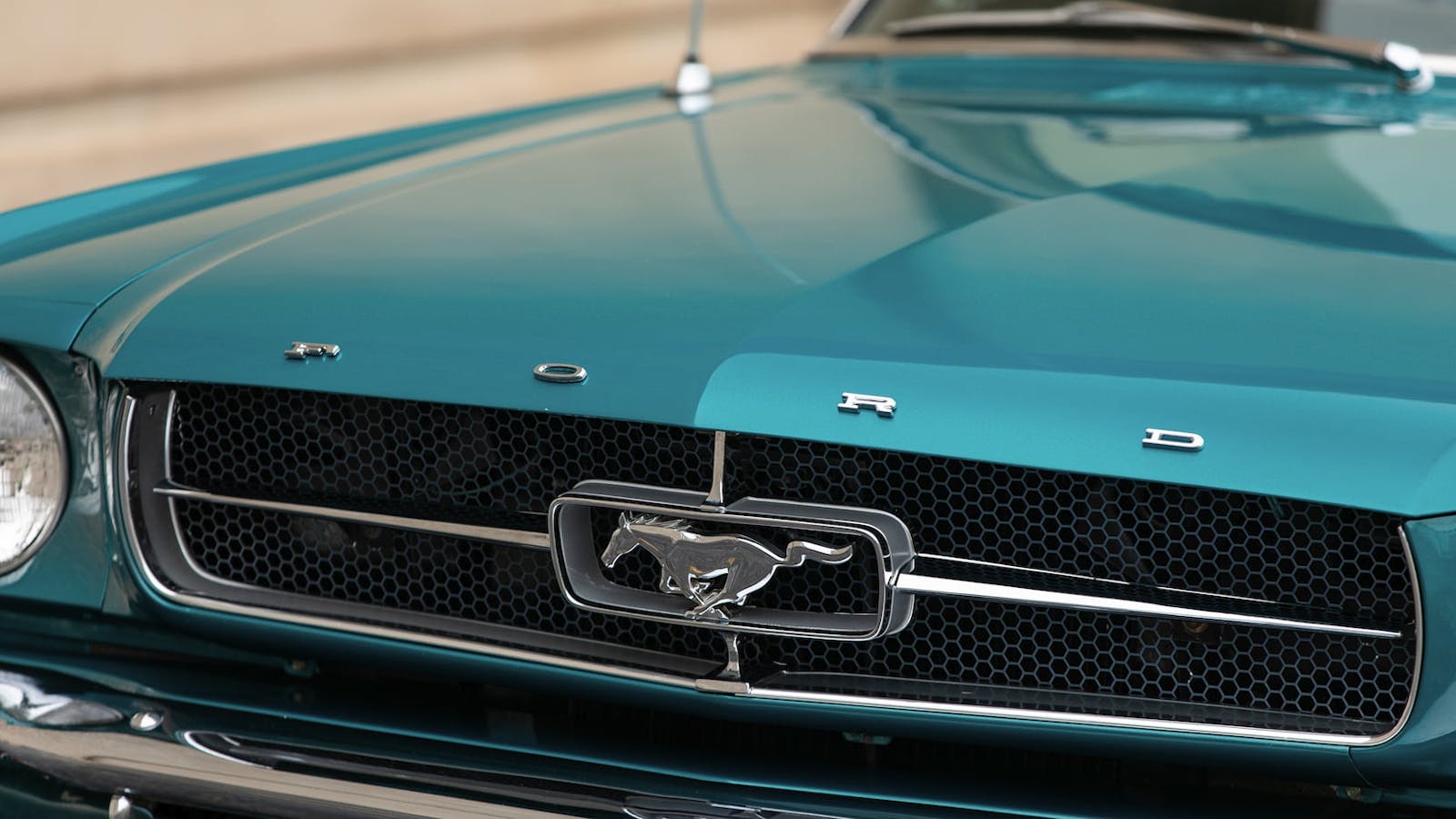Out of gas? What green regulations could mean for classics
Curtailing tailpipe emissions is a centerpiece of the Biden administration’s clean-air strategy, and some lawmakers have pushed for a phase-out of gasoline and diesel vehicles within the next couple decades.
It’s nearly impossible to find industry experts or environmentalists who think such a ban would spell the end for classic cars, but growing sentiment against the internal combustion engine could cause collectors headaches in years to come.
An Environmental Protection Agency official told Hagerty Insider that the current wave of legislation and rule-making is aimed at mandating standards for new cars. “The public policy focus is on the future fleet, and what it will look like, especially on the pace of electrification,” this official said.
President Joseph Biden has announced plans to consider toughening emissions standards, subsidizing car-charging infrastructure and creating “alternative-fuel corridors.” But Biden, the son of a car salesman and a collector himself, hasn’t shown an appetite to slap new rules at his fellow enthusiasts.
While federal decision makers focus on the future, local lawmakers and politicians do have the power to mess with history. Among the buzziest examples is London’s designation of a low-emissions zone. Zero-emissions zones are either in the works or in discussion in Berkeley, Santa Monica, Los Angeles, with officials looking at outright bans to forcing delivery services to only use battery-electric vehicles. Internationally, there are plans for experimentation with zero-emissions zones in Amsterdam, Barcelona, Milan, Seoul, Oslo, and Auckland. It’s worth noting the U.K.’s green-car regulations generally have exceptions for classic cars, but opponents say such exemptions might not extend to newer classics.
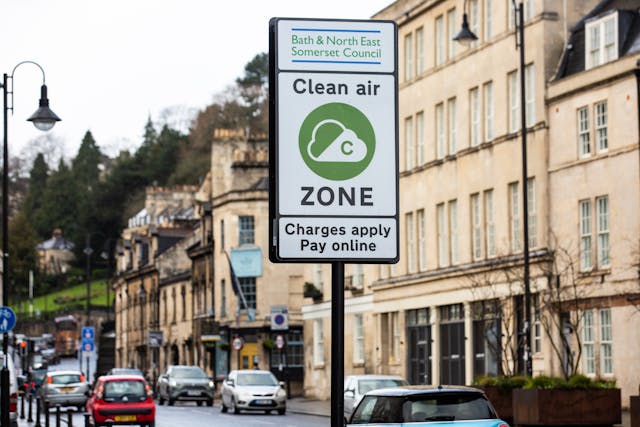
“These things have a way of spreading,” Malcolm McKay, an automotive writer working in leadership of the newly formed Historic & Classic Vehicles Alliance in the U.K., said. Many of the tools regulators use to clean up roads, including smog tests, could someday discourage those wanting to begin collecting.
McKay noted there are a lot of new mandates emerging that impose hefty fees on classic car owners and seriously cripple the jobs and income that the hobby supports. Some currently may affect a particular class of vehicles, such as diesel vans, trucks or small busses, but “the danger is that this sort of rulemaking starts expanding. It’s something we have to monitor all the time.”
And let’s not ignore the elephant in the room: Classics do pollute. The average vehicle sold in U.S. dealerships (car or truck) achieves roughly 25 miles per gallon, traveling about twice as far on the same amount of fuel as a car built when the EPA first started tracking corporate average fuel economy in the early 1970s. A host of technological advances and new components, meanwhile, has caused the grams of carbon dioxide per gallon to plummet over the past 30 years.
“Emissions of classics are terrible compared to a modern vehicle,” David Cooke, senior vehicles analyst with the Union of Concerned Scientists, said.
Shelie Miller, a professor who directs the University of Michigan’s Program in the Environment, recently studied the emissions created during Detroit’s annual Woodward Dream Cruise, a gathering of tens of thousands of motorists driving classics down the Motor City’s main drag. Her conclusion: The event has a carbon footprint of roughly 400 metric tons of C02, nearly equivalent to the annual footprint of eight U.S. households.
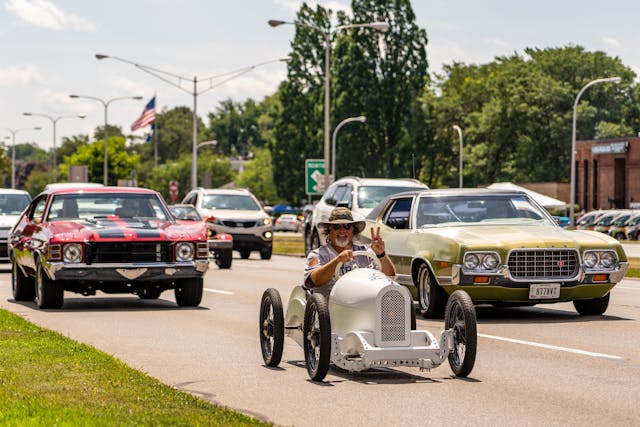
Miller, however, notes these types of gatherings are not representative of a typical classic-car utilization, or contribution to climate change. While transportation is estimated to be responsible for one-third of all global warming, she said, that label encompasses all the ways people get from Point A to Point Z—ranging from scooters and semis to planes and trains. Classics contribute a miniscule share.
“Generally, they’re not your daily driver and the mileage is going to be limited,” Cooke said. The Federal Highway Administration estimates a Class 8 truck is driven more than 60,000 miles annually, meaning a semi clocks more mileage in two weeks than a classic car travels in the typical year. (The average classic vehicle insured with Hagerty gets driven 2212 miles a year.)
Also working in classic cars’ favor is that they’re relatively rare. As we’ve reported before, the natural attrition of older cars means the vast majority of the older “guzzlers” have already left the road.
That said, newer cars are more durable—a concern from a climate standpoint, Cooke said. Today’s vehicles last longer but corporate average fuel economy improvements have barely budged over the past decade. That means that the “long tail” of vehicle emissions isn’t getting meaningfully shorter with each new model year.
Number crunchers are hard at work trying to estimate the ideal lifespan for a vehicle, Miller said. Recycle a car too soon, and a lot of the energy used to make that car will be wasted; wait too long, and its poor emissions performance will outweigh the value of keeping it alive.
Reliable older cars benefit lower-income Americans needing reliable transportation, which is good for the economy but arguably bad for the environment. This can lead to a tricky balancing act for those trying to weigh a collector’s interests against environmental goals.
In 2004, for instance, then-California Assemblywoman Sally Lieber (who, like President Biden, counts a car salesman for a father and claims classic-car enthusiast status) drew criticism from collectors—including Jay Leno—for coming up with the idea to expand smog checks to progressively older vehicles over time. The rule had been cars 29 years and under had to be checked, but her proposal locked in the grandfather clause only for cars built before 1975.
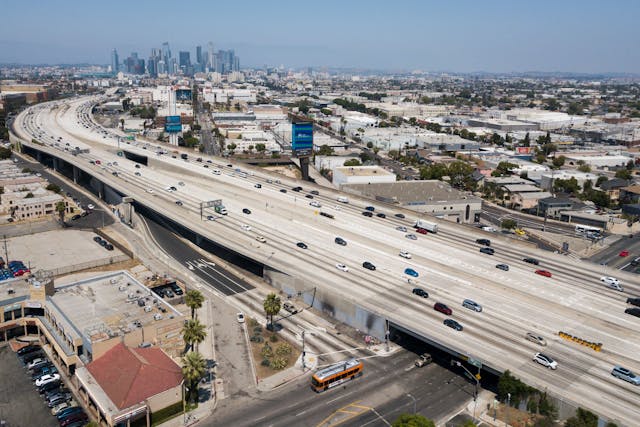
As the years have gone on, the cars eligible for smog checks have gotten older and older. This, along with the state’s older-vehicle recycling incentives, help cut off faster the “long tail” of emissions Cooke referenced.
Nevada Assemblyman Howard Watts, representing residents of Las Vegas and surrounding cities, said legislators need to be careful not to punish collectors when trying to take old cars off the road, or force repairs to maintain healthy emissions levels. His recent bill, aimed at reducing the amount of Nevadans registering classic-car plates, has been signed into law.
About a decade ago, Nevada started allowing owners of vehicles 20 years or older to obtain these plates. The number of such plates has ballooned, from 5000 to 6000 cars in 2011 to about 30,000 now. Why? A classic plate exempts you from a smog check as long as you commit to driving less than 5000 miles annually.
“Over the years, word got around that the world’s worst kept secret is the DMV has no way of enforcing the 5000-mile limit,” Watts said.
“So you find there are low-income folks running a small landscaping company out of someone’s house and using a beat-up F-150 with a classic plate on it. Or someone is driving a 1990-something Toyota Camry and there is nothing classic about it but it’s got a classic plate … we had to close the loophole (and) keep the integrity of the classic plate.”
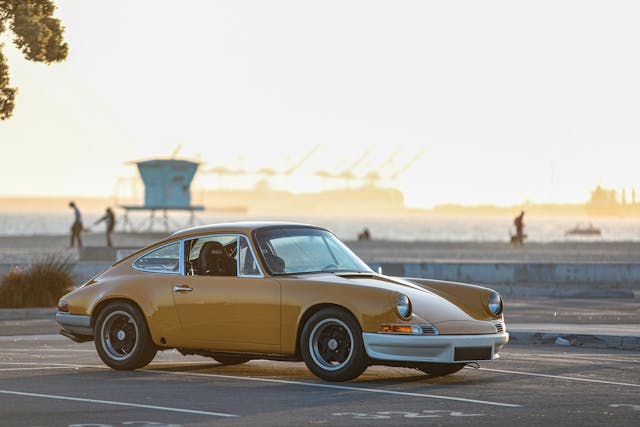
The solution is to require anyone with a classic plate to carry classic-car insurance, a move that most serious hobbyists have already made, he said. To help lower-income drivers make repairs or replace cars after failing an emissions test, legislators approved a small smog-check fee that will soon go into place. McKay, with the U.K.’s Historic & Classic Vehicles Alliance, said protecting enthusiasts from rules perceived to unfairly target classic cars can be as much about fighting well-meaning but misguided lawmakers as it is about fighting public opinion. Recently, as London Mayor Sadiq Khan’s aggressive stance against internal-combustion-engine vehicles has gained traction, classic-car owners have seen a shift in sentiment. “Some have really noticed a difference,” he said. “Instead of being stopped in a parking lot and told ‘what a lovely car,’ now it’s a question. They say ‘that is a really polluting car, isn’t it?’”

